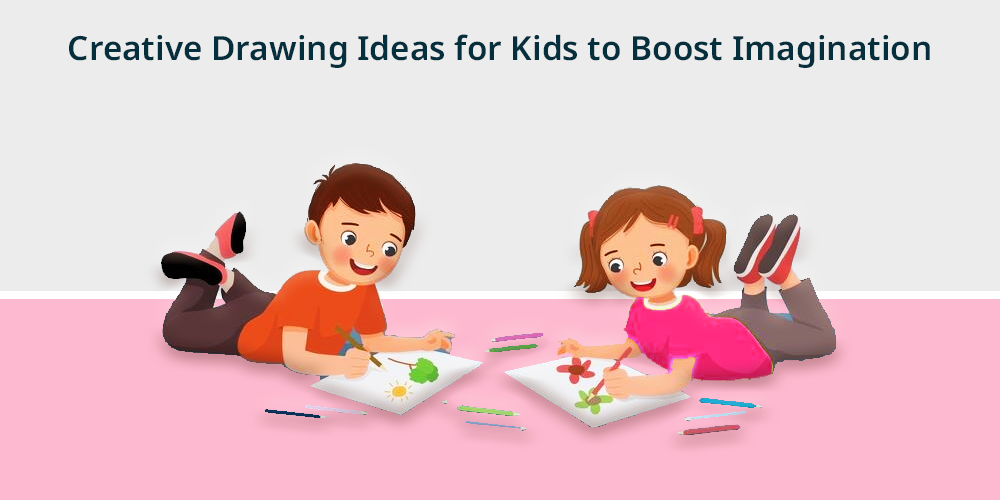
Children use drawing as the most basic form of self-expression which provides easy access to-expression. They start using drawing as their first tool to explore the world and understand emotions while exploring their creative thinking skills.
Drawing goes beyond basic graphics. It lets children develop storytelling abilities. Essential skills that emerge from creating their own worlds boost their mental and emotional growth.
Enlighten yourself better on the importance of student mental health to encourage such activities in your home or around your educational settings.
The article shows ten drawing activities that inspire child creativity while providing insights into its benefits. Read on to come through the best advice about developing creative skills at home and school.
Want to learn more about a kid’s creative activities at home so that your child finds you really fun? Then, don’t wait and jump on the above link.
Table of Contents
Top 10 Creative Drawing Ideas for Kids
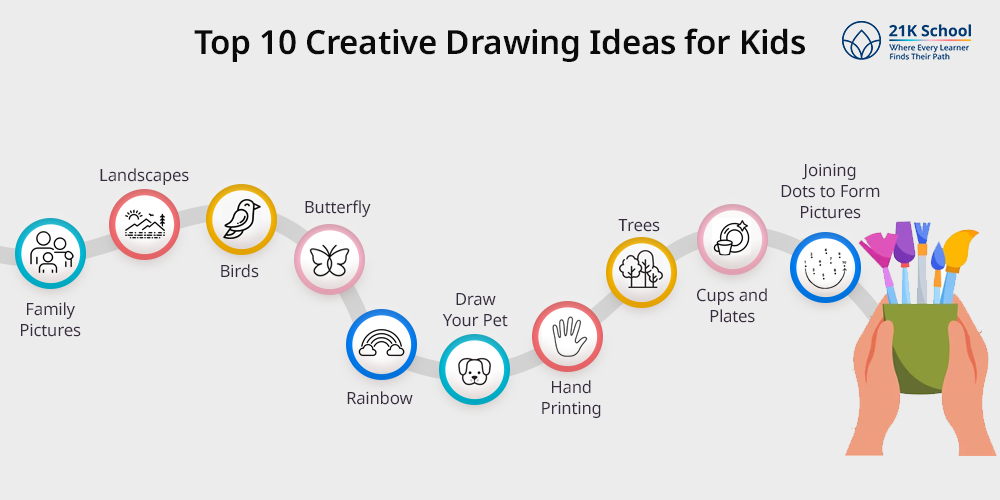
1. Family Pictures
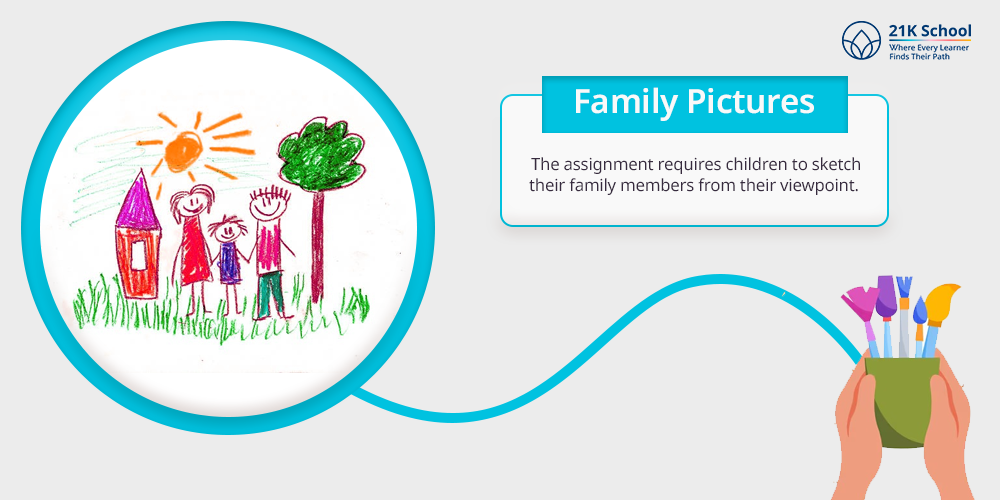
The assignment requires children to sketch their family members from their viewpoint. Drawing is an ideal starting point for children to share thoughts about relationships and how they feel.
Drawing members of your family no matter the occasion helps build stronger emotions together while helping gather memories.
- Best Execution Tip: Start with drawing sticks like figures of your family members for the body and parts. Get on with precision by forming their favourite clothes and hairstyles.
2. Landscapes
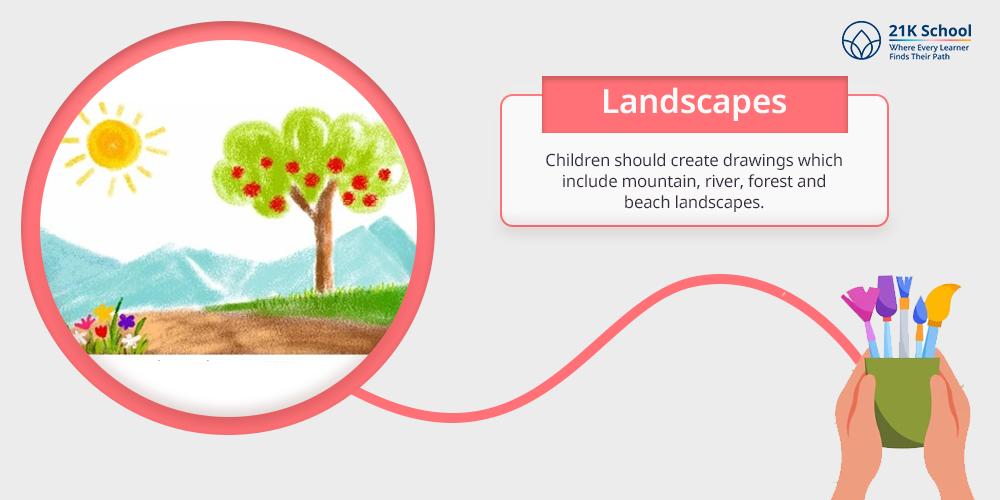
Children should create drawings which include mountain, river, forest and beach landscapes. Introducing horizon lines and depth by exploring shades can be a great drawing objective.
Observation abilities increase for children who draw from actual scenes or photographs.
- Best Execution Tip: First focus on the background like sky, mountains, or sun. Then, move forward with adding layers and depth to your scenic view as per your choice.
What is better than having a picnic with your kids and family while drawing landscapes with them? Are you still finding it hard to decide what to do during your summer vacation? Then read on, and get the best possible ideas.
3. Birds
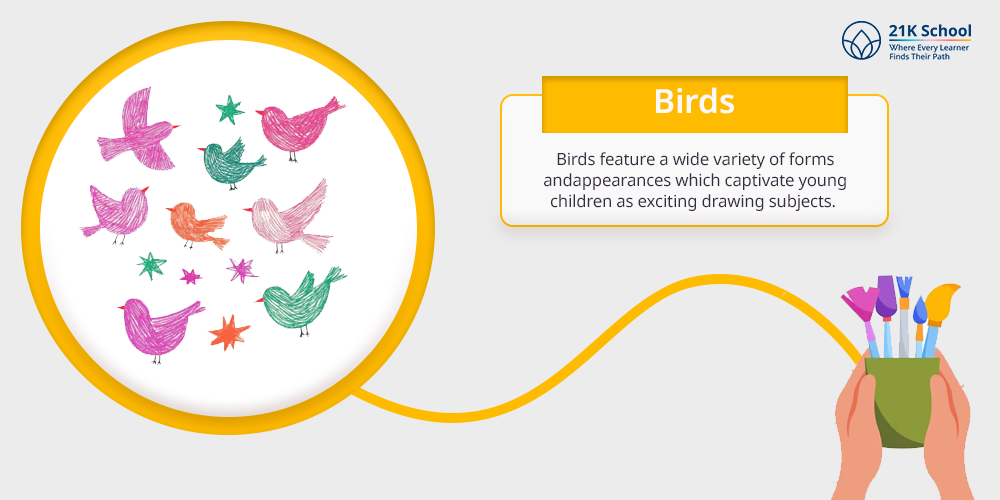
Birds feature a wide variety of forms and appearances which captivate young children as exciting drawing subjects. Children draw both basic cartoon birds and complex types like parrots and owls.
This assists in developing better natural perception along with improved attention to symmetry and details.
However in drawing classes, people might think that it won’t create distress if students were dealt in groups. But, that’s not true. Explore further to understand why individual attention is important in the classroom, even if it is online.
- Best Execution Tip: Try getting the best outline for the bird’s body and wings with the help of basic shapes like oval or triangle. You can also try your thumb for drawing the head outline of the bird.
4. Butterfly
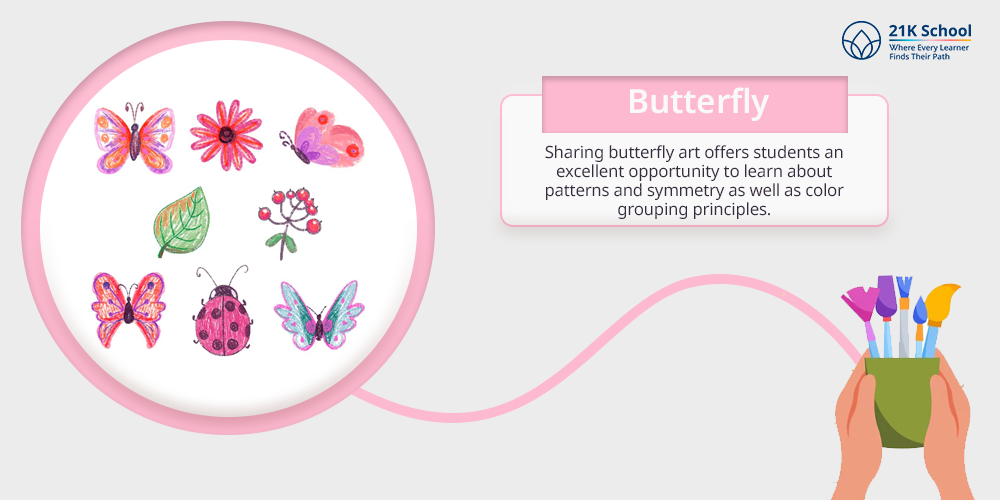
Sharing butterfly art offers students an excellent opportunity to learn about patterns and symmetry as well as color grouping principles.
Students should feel motivated to draw different butterfly species through their original wing designs and shapes.
- Best Execution Tip: To get symmetrical and beautiful butterfly wings, try drawing with identical cutouts from the first wing. You can also add shimmer or artificial stones for that extra elegance.
5. Rainbow
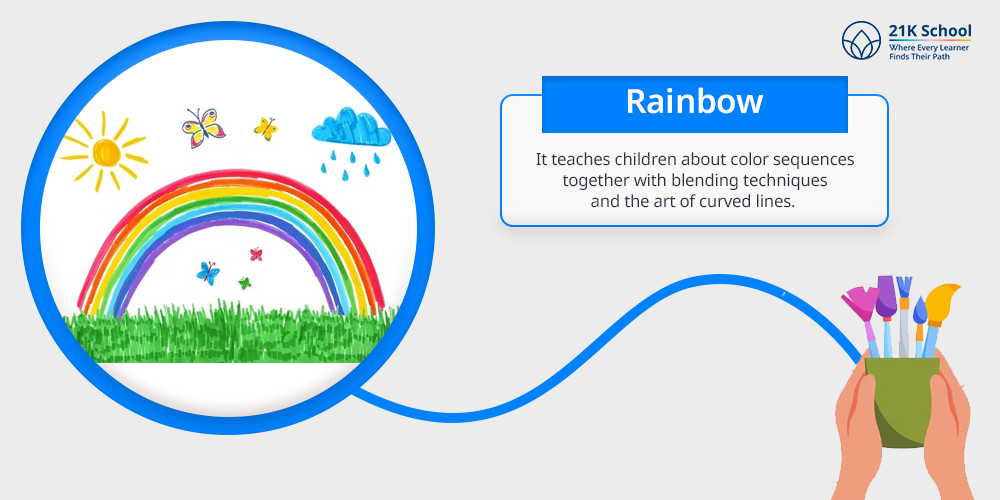
Drawing rainbows is an endearing activity. It teaches children about color sequences together with blending techniques and the art of curved lines.
Children should be allowed to try different drawings of rainbows which can appear in both magical realms or fantastical fortresses.
- Best Execution Tip: Use a compass and pencil to get the perfect boundary that looks clean, symmetrical and chic when coloured as rainbow.
6. Draw Your Pet
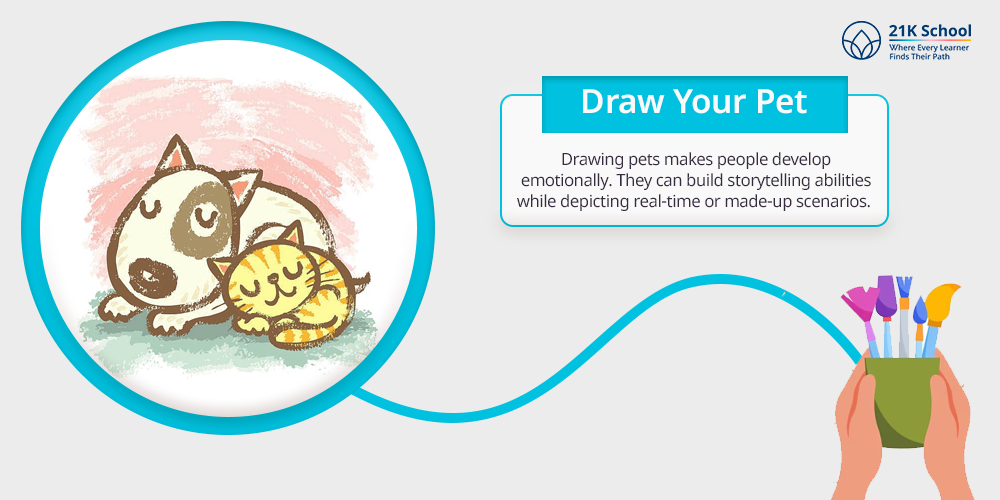
Drawing pets makes people develop emotionally. They can build storytelling abilities while depicting real-time or made-up scenarios.
Children can strengthen their memory along with observational skills by drawing their pet’s distinctive characteristics. These come under certain life skills aren’t taught in school and hence you gather them with the right spirit and experience.
- Best Execution Tip: You can take inspiration from your own pet, live or depend on a picture for that. Move ahead with drawing a measured outline of body parts and then add the details.
7. Hand Printing
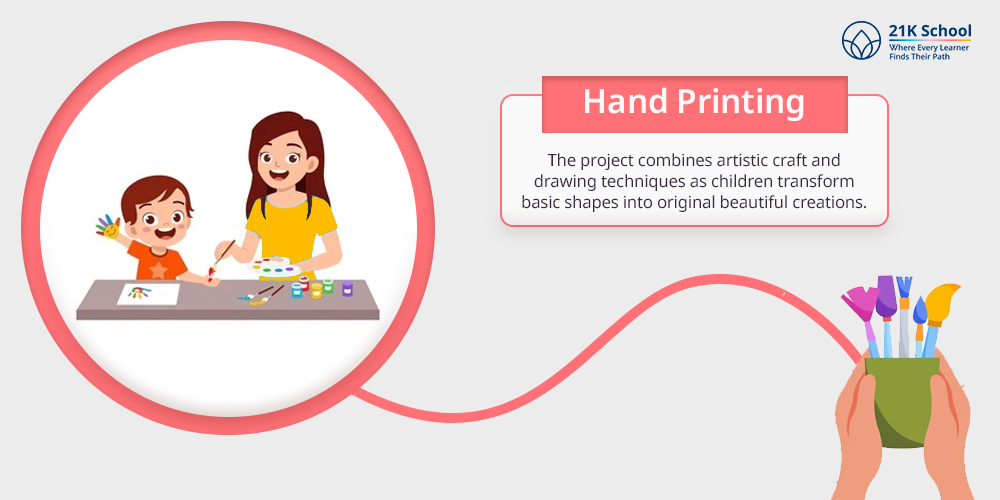
Children can draw their hands or paint them before they turn the shape into fish, peacock, turkey or tree forms. The project combines artistic craft and drawing techniques as children transform basic shapes into original beautiful creations.
- Best Execution Tip: Make sure that your hands are perfectly immersed in the colours for getting the best print. Also, keep your hands titled in horizontal direction for the appearance of a fish. Add weeds and pebbles for that extra underwater effect.
8. Trees
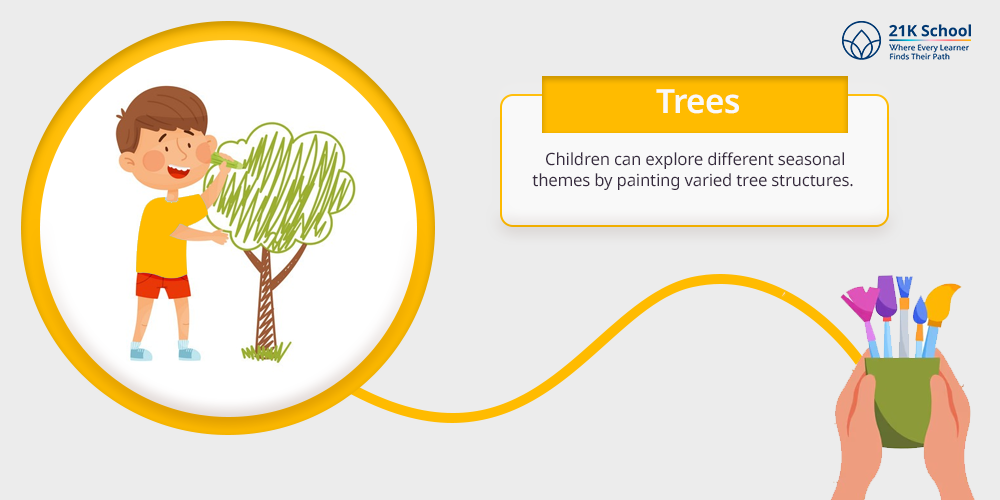
Children can explore different seasonal themes by painting varied tree structures. They can be inspired in autumn or winters when branches become snow-covered and during times of flower blossoms.
The activity enables students to learn about different plant varieties and observe their organization patterns.
- Best Execution Tip: Go with vertical and long strokes for the trunk. You can use a crumbled cotton or piece of paper for painting the blossoms or leaves.
9. Cups and Plates
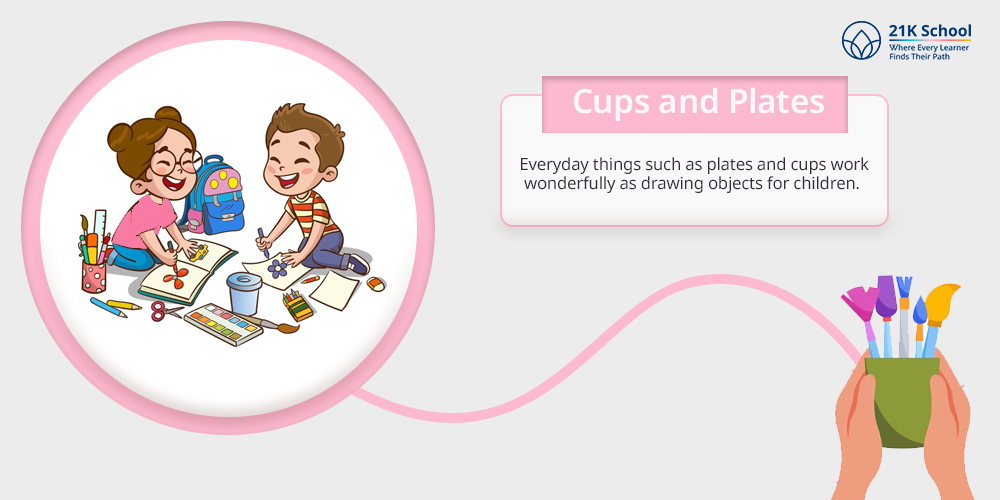
Everyday things such as plates and cups work wonderfully as drawing objects for children. The children develop knowledge of circular forms along with proportional understanding.
Further, this helps in mastering pattern generation skills during the process of designing personalized sets using creative color palettes.
- Best Execution Tip: Practice making ovals and circles for the best output of cups and plates. Use compass or bengals for assistance.
10. Joining Dots to Form Pictures
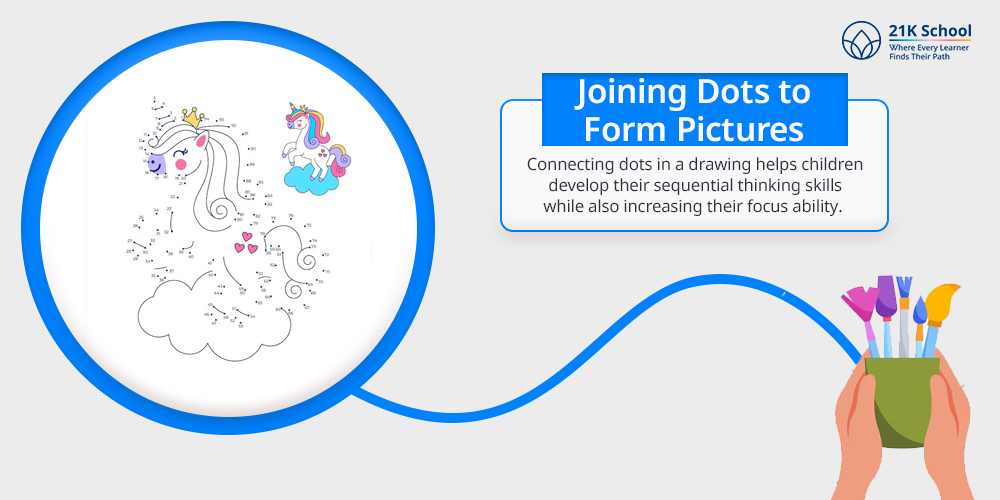
Remember the back of our childhood notebooks? How there were so many activities to do for us? Well, joining dots to form outlined pictures was one of them.
Connecting dots in a drawing helps children develop their sequential thinking skills while also increasing their focus ability. After the dots create a specific form children have the freedom to decorate and color their drawing design.
- Best Execution Tip: You can make the task easier by adding numbers to the dots in sequence. Encourage kids to add colours to drawn pictures.
What Are the Benefits of Creative Drawing in Kids?
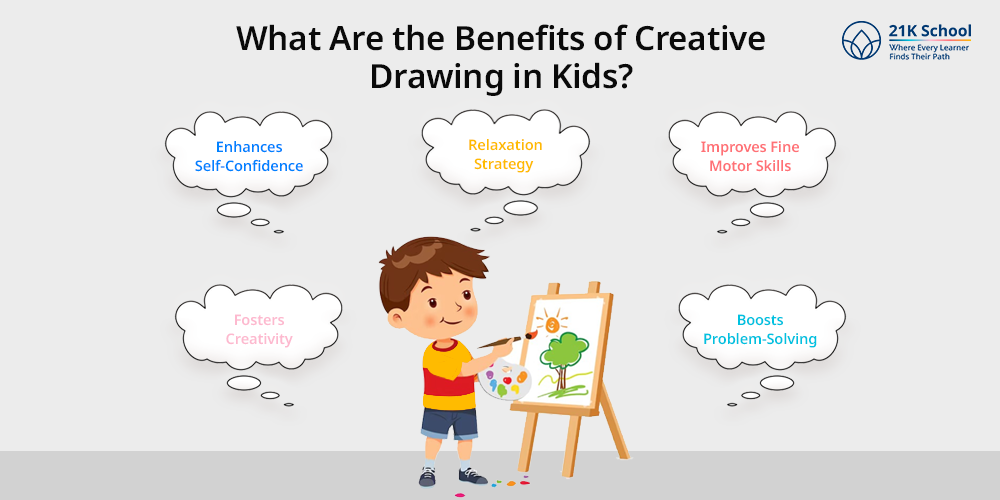
Drawing provides much more than entertaining play because children discover various educational opportunities through this practice.
When children interact with drawing activities they use their emotions, physical abilities, and mental thinking unlike most other activities.
1. Fosters Creativity
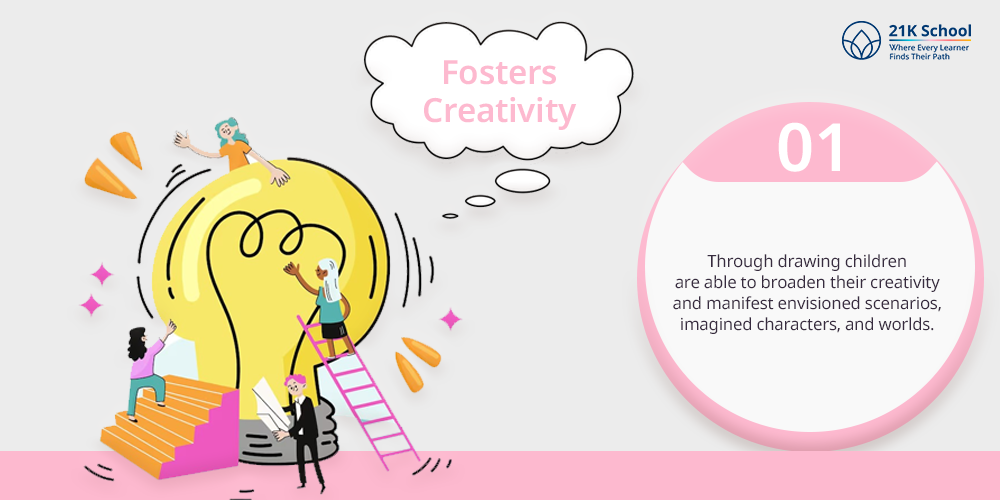
Through drawing children are able to broaden their creativity and manifest envisioned scenarios, imagined characters, and worlds.
The experience lets children explore hypothetical situations and create abstract notions while visualizing things that extend past written language.
2. Enhances Self-Confidence
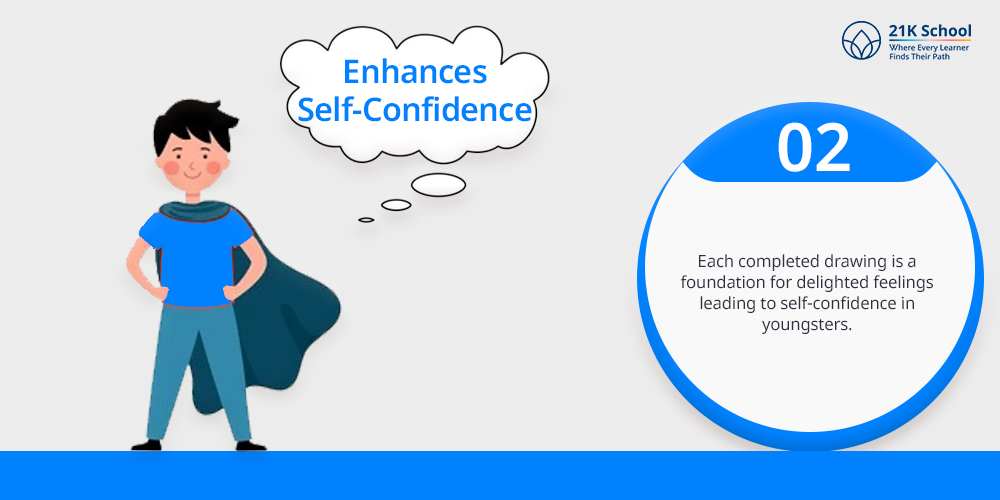
Each completed drawing is a foundation for delighted feelings leading to self-confidence in youngsters.
Children build positive self-esteem through achievements in art when they display their artwork to people.
3. Relaxation Strategy
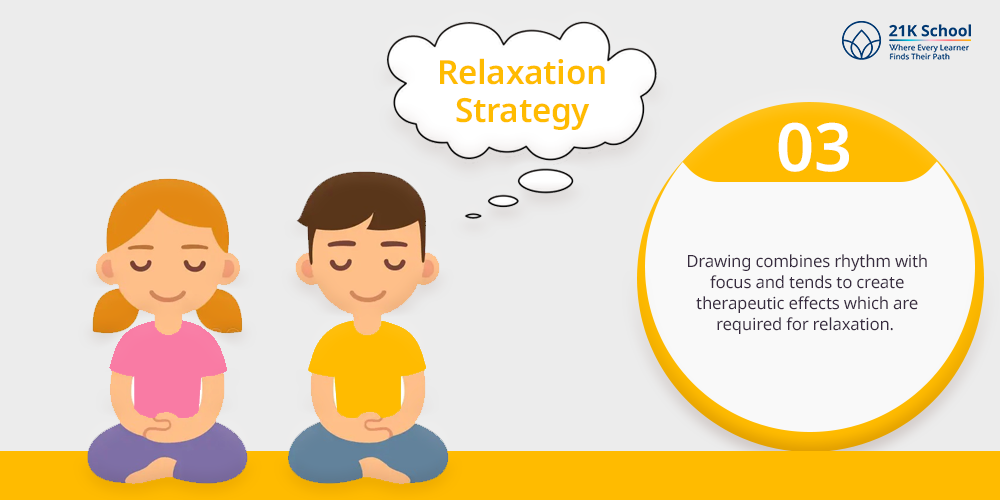
Drawing combines rhythm with focus and tends to create therapeutic effects which are required for relaxation. Drawing enables kids to manage their emotions through stress release to feel content after schoolwork.
These can be great for educators who want to aim on the benefits of activity based learning.
4. Improves Fine Motor Skills
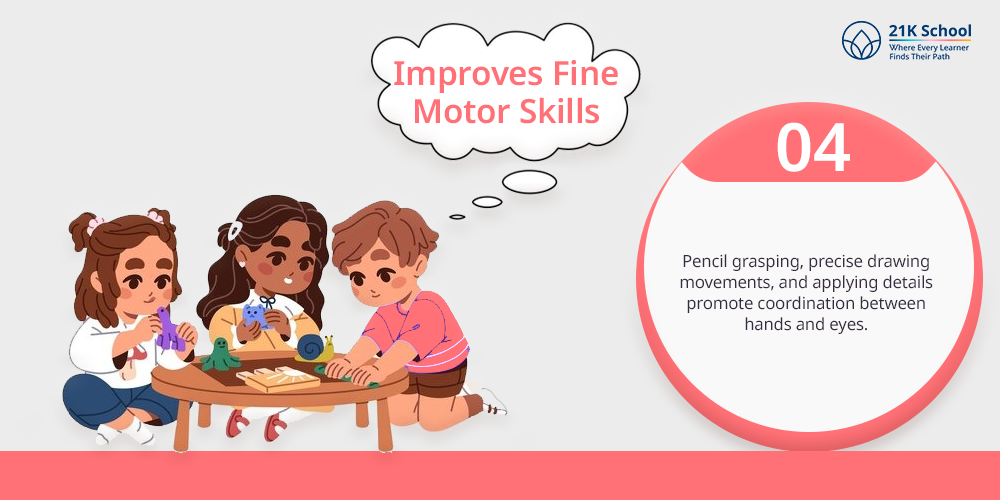
Pencil grasping, precise drawing movements, and applying details promote coordination between hands and eyes. This leads to improved small muscle abilities.
The essential functions of writing and typing in addition to everyday responsibilities depend on these abilities. Read more for learning about fine motor skills activities.
5. Boosts Problem-Solving
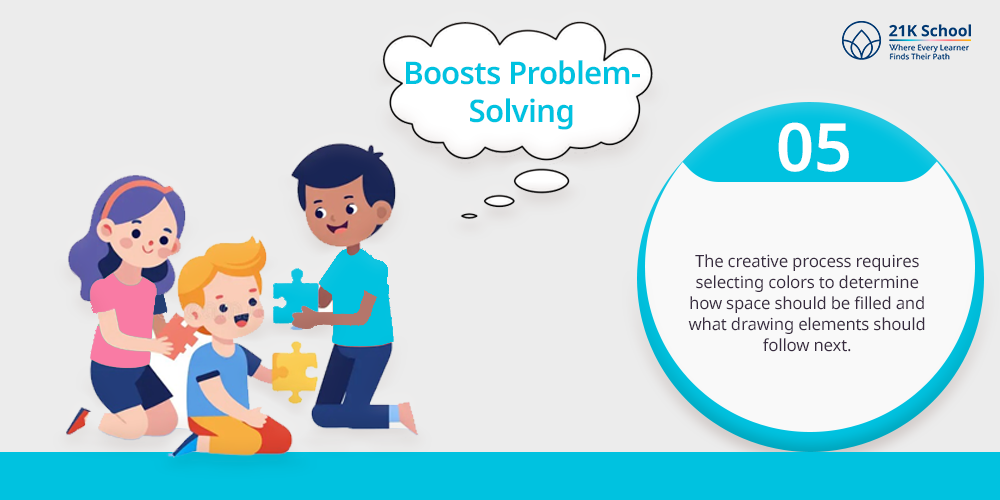
The creative process requires selecting colors to determine how space should be filled and what drawing elements should follow next.
Children learn problem-solving abilities through these activities which proves important for schoolwork and their everyday struggles.
Tips to Reinforce Creative Drawing in Kids
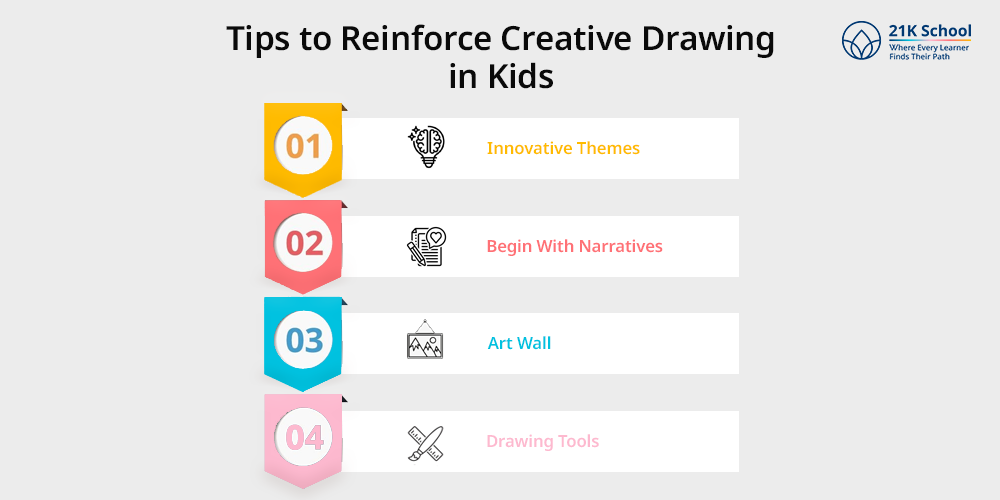
Children should have the freedom to create instead of feeling obligated to reach perfection in their work. A work of art shows no wrong choices since it involves finding new territories.
Here are some of the tips to encourage drawing in your children:
- Innovative Themes: Keep drawing themes fresh by introducing new idea categories. These can include undersea worlds, favorite foods, magical creatures, or dream houses of your children.
- Begin With Narratives: Begin the creative process by stating “A flying cat would appear as what?”. The drawing process works best with narratives because it builds imagination capabilities.
- Art Wall: An art wall at home or digital gallery can be a means to show your recognition of their artistic talents. Put every creative idea of theirs on these walls to make them feel appreciated. Encourage appreciating each other and teach how to make friends at school.
- Drawing Tools: Artistic tools such as oil pastels, watercolor pencils, charcoal shades, and digital drawing applications should be kept in handy. They will provide fresh drawing opportunities to learn new techniques for your kids.
Ending Notes
Drawing stands beyond its role as a child’s entertainment. It functions as an essential skill that provides emotional relief and educational grip.
Practicing drawing regularly will benefit a child’s development of life skills in addition to nurturing their artistic progression. Independent countries need imaginative thinkers combined with storytellers and visionaries.
Through artist development in children we establish their colorful directions in a world which often overwhelms with grayness. Introduce children to pencils and reveal their blank sketchpad pages to start the creative process.
Read on to get a bunch of fun and engaging educational activities for kids. It’s no time for being a bore, but to soar.


